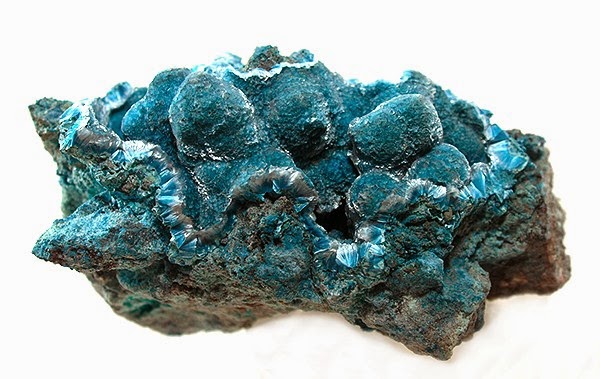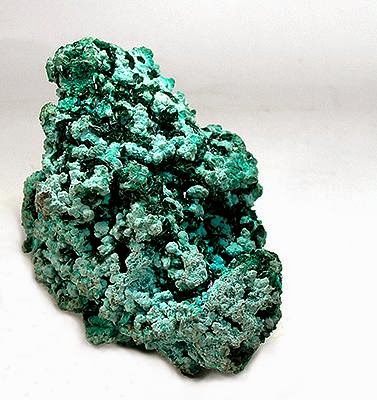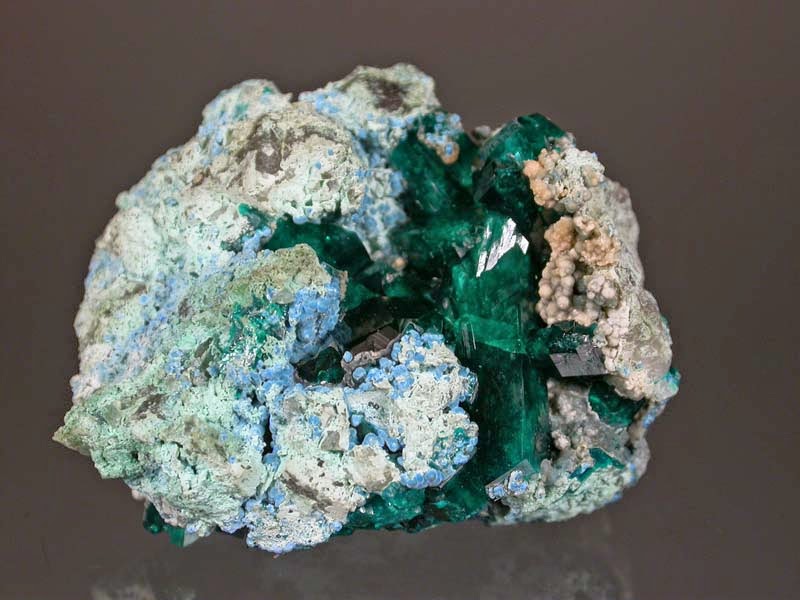
Chemical Formula: Cu8(Si8O22)(OH)4·H2O
Locality: Tantara and Kambowe, Zaire.
Name Origin: Named after J. Planche who brought it from Africa.
Plancheite is a hydrated copper silicate mineral with the formula Cu8(Si8O22)(OH)4·H2O. It is closely related to shattuckite in structure and appearance, and the two minerals are often confused.
Structure
Plancheite is a chain silicate (inosilicate), with double chains of silica tetrahedra parallel to the c crystal axis. It occurs as sprays of acicular or fibrous radial clusters, with fibers extended parallel to the chains, i.e. along the c crystal axis; it can also form tiny tabular or platy crystals. It is a member of the orthorhombic crystal class m m m (2/m 2/m 2/m), which is the most symmetrical class in the orthorhombic system.
History
Discovery date : 1908
Town of Origin : MINDOULI
Country of Origin : ZAIRE ex-CONGO
Optical properties
Optical and misc. Properties: Translucide
Refractive Index: from 1,69 to 1,74
Axial angle 2V: 88,5°
Physical properties
Hardness : 6,00
Density : from 3,65 to 3,80
Color: pale blue; dark blue; green blue; greenish blue
Luster: adamantine; silky; unpolished; bright; satin-like
Streak : pale blue
Cleavage : NO
Photos :












